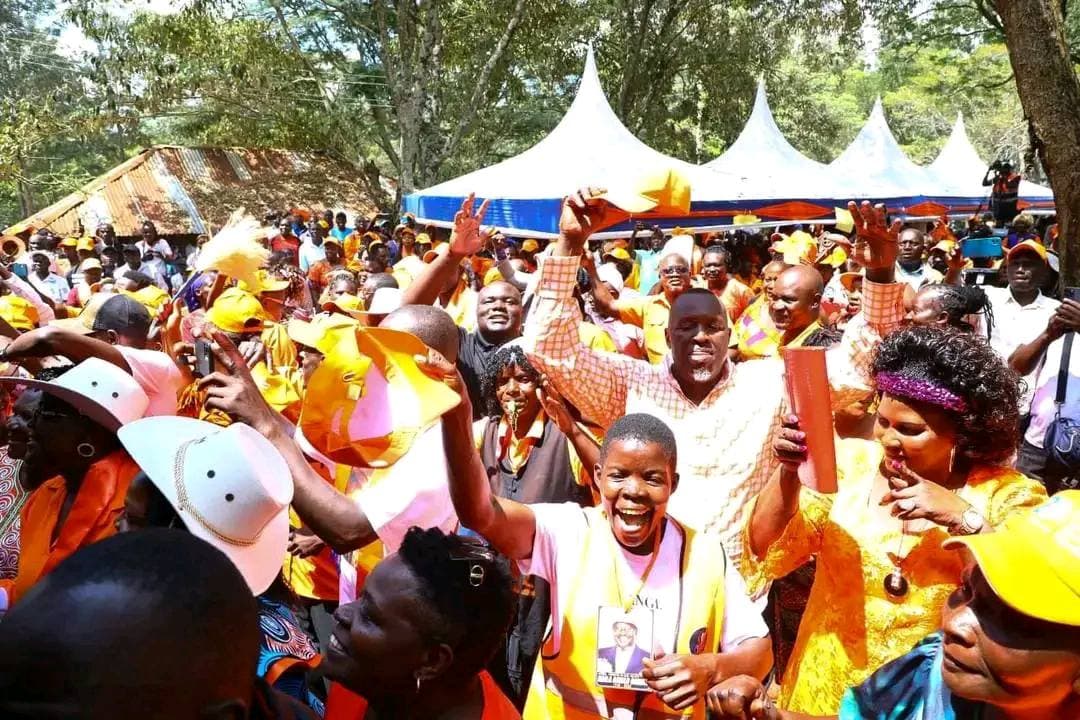Loading News Article...
We're loading the full news article for you. This includes the article content, images, author information, and related articles.
We're loading the full news article for you. This includes the article content, images, author information, and related articles.
A deep ideological rift has emerged within Kenya's Orange Democratic Movement (ODM) over its future, with factions openly clashing on whether to continue cooperation with President William Ruto's government

NAIROBI, KENYA – The Orange Democratic Movement (ODM), a cornerstone of Kenyan opposition politics for two decades, is grappling with a profound internal schism that threatens to redefine its future and reshape the national political landscape. The division, which erupted into public view during the party's 20th-anniversary celebrations in Mombasa on Saturday, November 15, 2025, pits two increasingly hostile camps against each other: one advocating for continued participation in President William Ruto's "broad-based government" and another demanding a return to the party's foundational principles of aggressive opposition.
A vocal and influential group of ODM leaders, including several serving in President Ruto's cabinet, argues that the party's interests and those of its supporters are best served from within the government. This faction, which includes figures like Mining Cabinet Secretary Hassan Joho, Treasury's John Mbadi, and the new party leader Dr. Oburu Oginga, insists that being in opposition has yielded minimal development for their constituents. Their mantra, "Hatuwezi Kurudi Opposition" (We cannot go back to the opposition), encapsulates a strategic pivot towards pragmatism over ideology.
During the Mombasa event, Mombasa Governor Abdulswamad Nassir stated, “We are not apologetic being in the broad-based government where Baba left us.” This sentiment is rooted in a political pact made between the late party patriarch Raila Odinga and President Ruto on March 7, 2025, which led to the appointment of several ODM members to cabinet and other senior government roles. Proponents of this arrangement argue it was Odinga's final wish for the party to work with the government to ensure stability and development. Dr. Oginga has been firm, stating, "This time round, ODM will either form the government or be in government, not in the opposition trenches."
Conversely, a determined faction of ODM stalwarts is fiercely resisting what they see as the party's co-optation by the Kenya Kwanza administration. Led by figures such as Secretary-General Edwin Sifuna, Siaya Governor James Orengo, and Vihiga Senator Godfrey Osotsi, this group champions a return to ODM's role as a robust opposition force, holding the government accountable. They warn that continued collaboration risks diluting the party's identity, betraying its reformist legacy, and confusing its loyal base.
Speaking during the anniversary events, Governor Orengo dismissed the push for a permanent alliance with the ruling coalition as "idiotic," arguing it would destroy the party's soul. Edwin Sifuna has consistently maintained that while the party's top organs resolved to remain in the broad-based arrangement until 2027, this does not equate to an endorsement of President Ruto's re-election or an abandonment of fielding their own presidential candidate. This camp's position is bolstered by voices like Winnie Odinga, who has called the current pact "complicated" and urged for a National Delegates Convention to allow the party's members, not just its leaders, to decide the future direction.
The ideological struggle is unfolding in the shadow of the death of Raila Odinga on October 15, 2025, which created a significant leadership vacuum. His absence has allowed long-simmering succession ambitions and strategic disagreements to come to the fore. The two factions are not only debating strategy but are also implicitly positioning themselves for control of the party machinery ahead of 2027.
The pro-government wing appears to be calculating that a partnership with President Ruto offers the most direct path to power and influence. Some analysts suggest this could culminate in a formal 2027 coalition, with President Ruto potentially picking a running mate from ODM to secure its formidable voting bloc. Treasury CS John Mbadi has even suggested ODM should realistically aim for the presidency in 2032, implying a strategy of supporting Ruto in 2027.
The opposition purists, however, believe that maintaining distance is crucial for ODM's long-term survival and relevance. They argue that the party must groom its own presidential candidate and present a clear alternative to Kenya Kwanza, upholding its democratic duty. The ultimate direction the party takes will have profound implications for Kenya, determining the strength of its opposition, the nature of its political alliances, and the competitive landscape of the 2027 General Election.